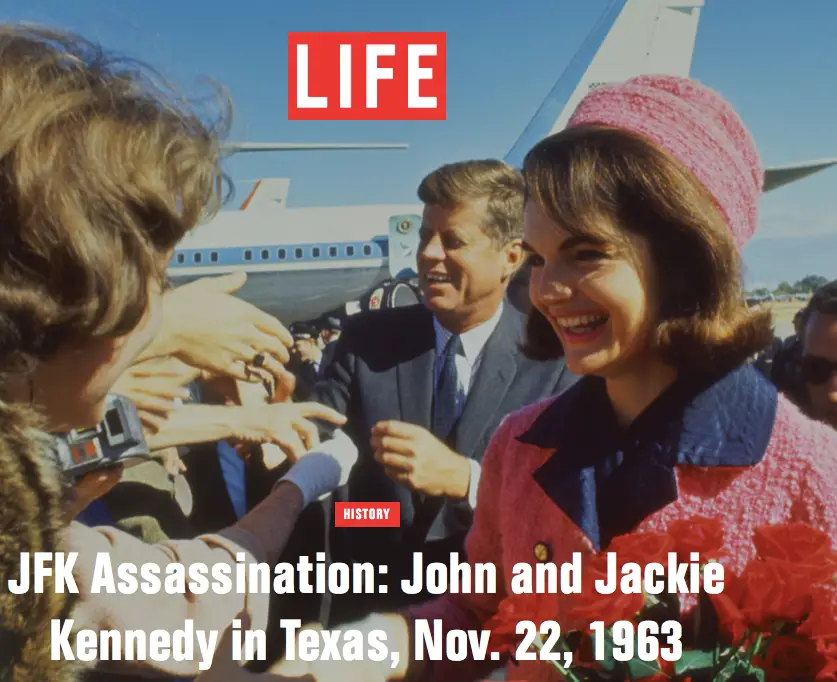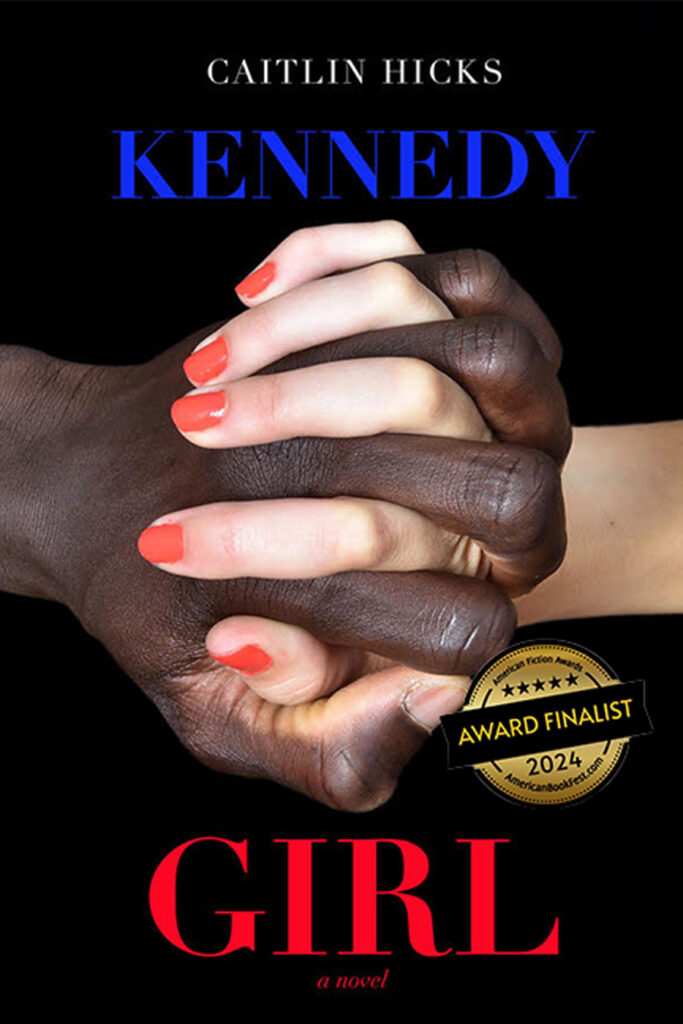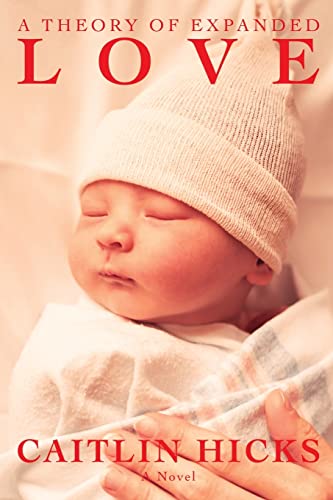The Decades of Events That Led to The Assassination of John F. Kennedy
By Walter Herbst
Sunbury Press, October, 2021
ISBN 10: 978-1-62006-874-8
Review by Caitlin Hicks
The detailed history of society, culture and country in the four decades prior to the assassination of American President John F. Kennedy, reveals a fascinating – and disturbing interpretation of events unfolding in the years leading up to the ‘unsolved’ mystery of that fateful day in Dallas, Texas.
The cover image of IT DID NOT START WITH JFK, a relaxed portrait of the 1963 U.S. President leaning on the backseat of the convertible where he was mortally wounded seconds later, reflects his sense of power and entitlement – and his absolute cluelessness to the dark forces swirling around him.
Walter Herbst, author of IT DID NOT START WITH JFK has created a two-volume, meticulously researched oeuvre covering historical events as early as 1924, which build a case over decades revealing the forces that led to the assassination of JFK. Published by Sunbury Press, the work reveals uncanny similarity to today’s events. It’s written and annotated like a PhD thesis, backed up by pages of references.
With summary after story after incident, the author proves with his tome that good journalism is born of natural curiosity. Herbst’s compelling journey creates associations based upon questions he asked himself as his research led him to the formulation of his theory. He begins with attempted assassinations, military coups and murders of world leaders from 1961 to 1964, all liberal governments, the dirty work mostly at the hands of the CIA, including the leaders of Turkey, France, Iraq, Syria, Guatemala, Italy, Ecuador, Dominician Republic, Honduras, South Vietnam, Gabon, Cuba, Brazil and Bolivia. He spots the obvious similarities.
Herbst asks questions that lead to his unsettling discoveries support his theory, “the assassination of JFK was a domestic conspiracy consisting of an elite group that wanted to change the country at the expense of what most Americans wanted.”
Using names, dates, treaties, political appointments, arrests, murders, testimony and other numerous facts available in plain sight, Herbst points out “For in the 1960s, the United States was on the verge of accepting coexistence with Communist nations, promoting the inevitability of racial equality and expanding social programs that elites believed destroyed self-determination.”
The link between the fascism that lingered after World War II, fear of Communism, the Vatican, the US Military and belief in rightness so characteristic of Catholic Church, produced “an organized effort throughout the world to remove pro-Communist governments from power and when necessary, to assassinate leaders who stood in the way of this occurring.”
With names, dates and the re-telling of events taking place in plain sight of American citizens, Herbst sets up the dynamic that still existed in 1963 – when this cabal decided once and for all, that John F. Kennedy had crossed the line. But not before his readers can add it all up for themselves.
As early as 1932, Herbst points to attempts to overthrow FDR by fascist elites. At the time, a bill was passed in Congress providing World War I veterans additional compensation to be paid in 1945. In the summer of 1932 over 20,000 veterans (dubbed ‘The Bonus Army’) marched on Washington demanding payment. Addressing the crowd was Major General Smedley Butler. The protestors were dispersed by General Douglas McArthur and his military contingent. But the following year, FDR abandoned the gold standard, which delinked the dollar to gold. FDR was then able to print money to fund his social programs, and his opponents feared runaway inflation and bankruptcy on the heels of the Great Depression. And when FDR officially recognized the USSR on November 16, 1933, Herbst notes: “the potential for his violent overthrow became more serious.”
Major Butler then became involved with a “right-wing group of wealthy Fascist Americans whose intent was to overthrow the United States government.” Big money, including the DuPont’s and JP Morgan, planned to use Butler to assemble 500,000 men in Washington to take over the US government. But Butler smelled treason and revealed the plot to the House of Representatives. After its exposure, the story quietly disappeared – as the conspirators were much too influential to be charged with anything, but these members of The American Liberty League subsidized groups such as the facist and anti-Semitic “Sentinels of the Republic” and “Crusaders” who considered lynching Roosevelt. Attempts and plots were made on FDR’s life and in January 1940, 18 members of a “Christian Front” splinter group were charged with attempting to overthrow the US government by seizing the White House and installing a military dictator.
“Wealthy elites in America wanted to stop anyone who supported a Socialist agenda,” writes Herbst, and then he goes on to describe Louisiana Senator Huey Long’s “Share Our Wealth” program which proposed a redistribution of wealth, a guaranteed income for every family in America, pensions for the elderly, aid for schools and other such ‘Socialist’ evils. Long was assassinated on September 10, 1935.
Herbst cites right-wing paramilitary groups such as The Square Deal Association, the Liberty League, The John Birch Society, who were so infused with fear of the Left that they believed the only way to stop them was through armed revolt.
“During the cold war, the radical right seized upon an abnormal fear of communism to create an atmosphere of hysteria. . . they wanted . . an unprovoked first strike against the Soviet Union and China to eliminate communism once and for all.”
Herbst’s narrative creates a teeming picture of society in the decades prior to JFK’s shooting: with famous players such as Charles Lindburgh, who was a proponent of eugenics, Henry Luce, the radical right-wing publisher of Life magazine (who purchased the Zapruder fil and locked it away so no one could see it), Pope Pius XI, who blamed Jews for the Bolshevik takeover of Russia and supported Mussolini and fascism, Mafia boss Lucky Luciano who funded stay-behind armies fighting communism in post-war Europe and many ex-Nazi war criminals, brought to the US as part of Operation Paperclip. General Douglas MacArthur, Charles de Gaulle, Fidel Castro, Chiang Kai-shek, Lyndon Johnson, Jack Ruby, Lee Harvey Oswald and his wife Marina – , even Joe Kennedy and the entire Bush family – Herbst has an historical back story for each, weaving their relevance into his tapestry.
Herbst studies the growth of the Military Industrial Complex that Eisenhower warned against: “The Military-Industrial Complex and their radical right, Christian, racist, White Nationalist supporters perfectly fit the definition of fascism. Extreme military nationalism defined them. The believed in American superiority . . racial segregation and eugenics. A social class system was part of their core values, including the purging of undesirables from society. The subordination of individual interests for the national’s good was another way of saying self-determination was their God-given right guaranteed by The Constitution. . . These people were beyond right-wing; They were fascists in every sense of the word who were willing to fight and die to preserve their American way of life in the 1950s.”
He tracks the abundant influence of The Mafia, the backstory of The Korean War, even the beginnings of the Vietnam War, when Vietnam asserted itself against France as an independent country. IT DID NOT START WITH JFK is more than an investigation into the death of JFK; it is an indictment of powerful forces within the United States who, while trying to preserve their country in their own image and likeness, commit all forms of treason, betrayal and murder in the United States and around the world.
The research is obvious in this stunning who-done-it; sometimes it sounds like delicious gossip, at others, the telling of deadly secrets. Taken together, Herbst’s impressive life’s work clearly re-defines the cleansed image of the happy nuclear US family relocating to the suburbs after the war, with Mom in the kitchen loading the gleaming dishwasher, Dad home from work at the office, living a modern, democratic existence, “with truth and justice for all.”
IT DID NOT START WITH JKF is retrospective history, a page-turning adventure into the political past, peopled with the global elite gone horribly wrong. It’s a sober reconsideration of our beliefs. A must-read.



